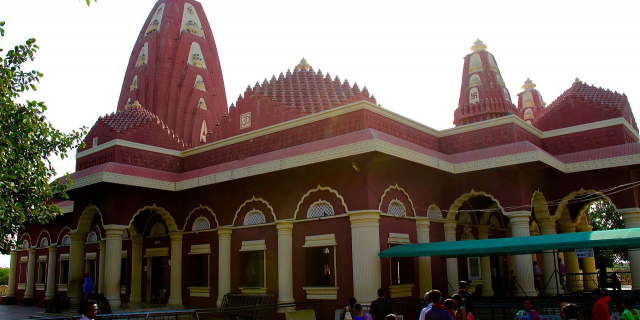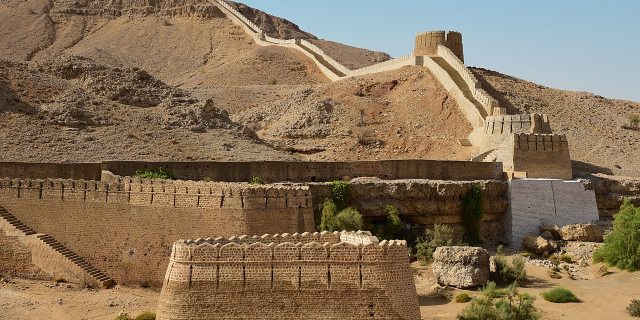Lakhpat is a town in Kachchh district in the Indian state of Gujarat located at the mouth of the Kori Creek. The town is enclosed by 7km-long, 18th century fort walls.
 Ceremonial Horseback Portrait of Prince Lakhpatji of Kutch with Four Attendants. Kutch or Nagaur, c.1750
Ceremonial Horseback Portrait of Prince Lakhpatji of Kutch with Four Attendants. Kutch or Nagaur, c.1750 Kachchh Area
Kachchh AreaHistorically Lakhpat has been a very important trading post connecting Gujarat to Sindh. The waters of the Sindhu river used to flow into Lakhpat and further on to Desalpar Gunthli. In historic times, Lakhpat had only one very short period of prosperity. Rice used to be cultivated there, which was the source of 800,000 Koris in annual revenue. It is also said that Lakhpat used to generate an income of 100,000 Koris everyday from maritime activities. Fateh Muhammad, about the close of the eighteenth century (1801), enlarged and rebuilt its wall, and for a time it was a center of trade in Sindh. Though he thought it one of the chief supports of his power, Lakhpat declared against Fateh Muhammad when he opposed the Rao of Cutch State in 1804. A few years later (1809), the commandant of the fort, Mohim Miyan, drove out the agents of Hansraj and governed the town on his own accounts. In 1818, Lakhpat had 15,000 people and yielded a yearly revenue of £6000 (₹ 60,000). After the earthquake of 1819 a natural dam known as the Allahbund was formed, and the Indus river changed its course of flow and started flowing into the Arabian sea further north.[1] Thus Lakhpat lost its importance as a port. By 1820, the population reduced to 6000 inhabitants, consisting chiefly of mercantile speculators from other countries and families of Hindus that migrated from the Sindh province. The walls were in good repair, but the houses were ruined and did not fill one-third of the area. By 1851, all trade had left the town, and it has since remained poverty-stricken and half deserted. The population reduced to 2500 by 1880.[2]
Today it is a sparsely populated ghost town, a city of ruins of buildings and a magnificent fort surrounding them. The population was 463 in 87 households 2001[3] which increased to 566 in 108 households in 2011.
During the period of Muslim rule, some Hindus who had not converted to Islam under the Ghaznavids moved to Vighokot and Lakhpat around 1028 AD from Sindh. They migrated to live peacefully under Jadeja Rajput Hindu rulers as the Samma Muslim rulers were oppressing them.































Add new comment